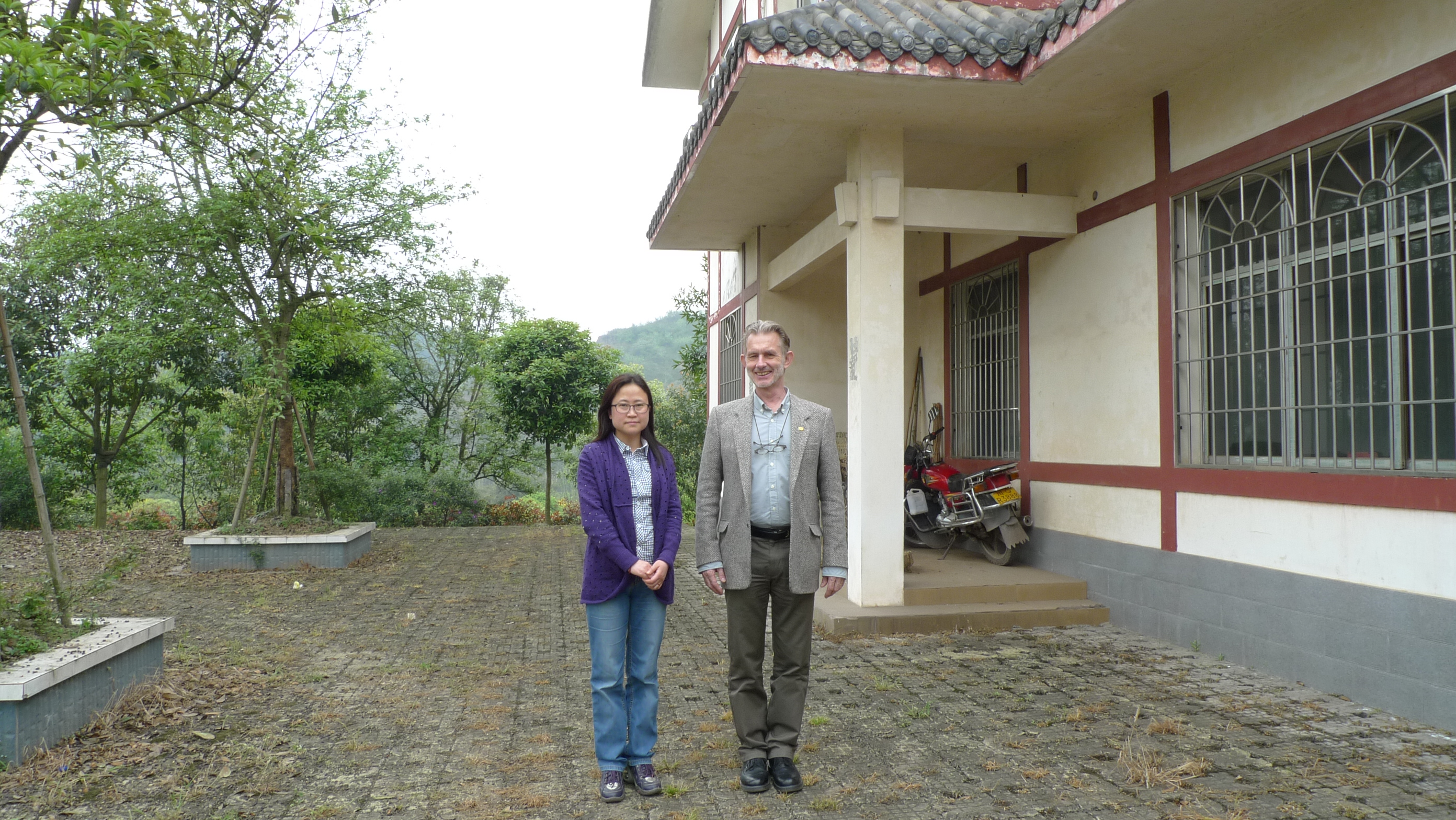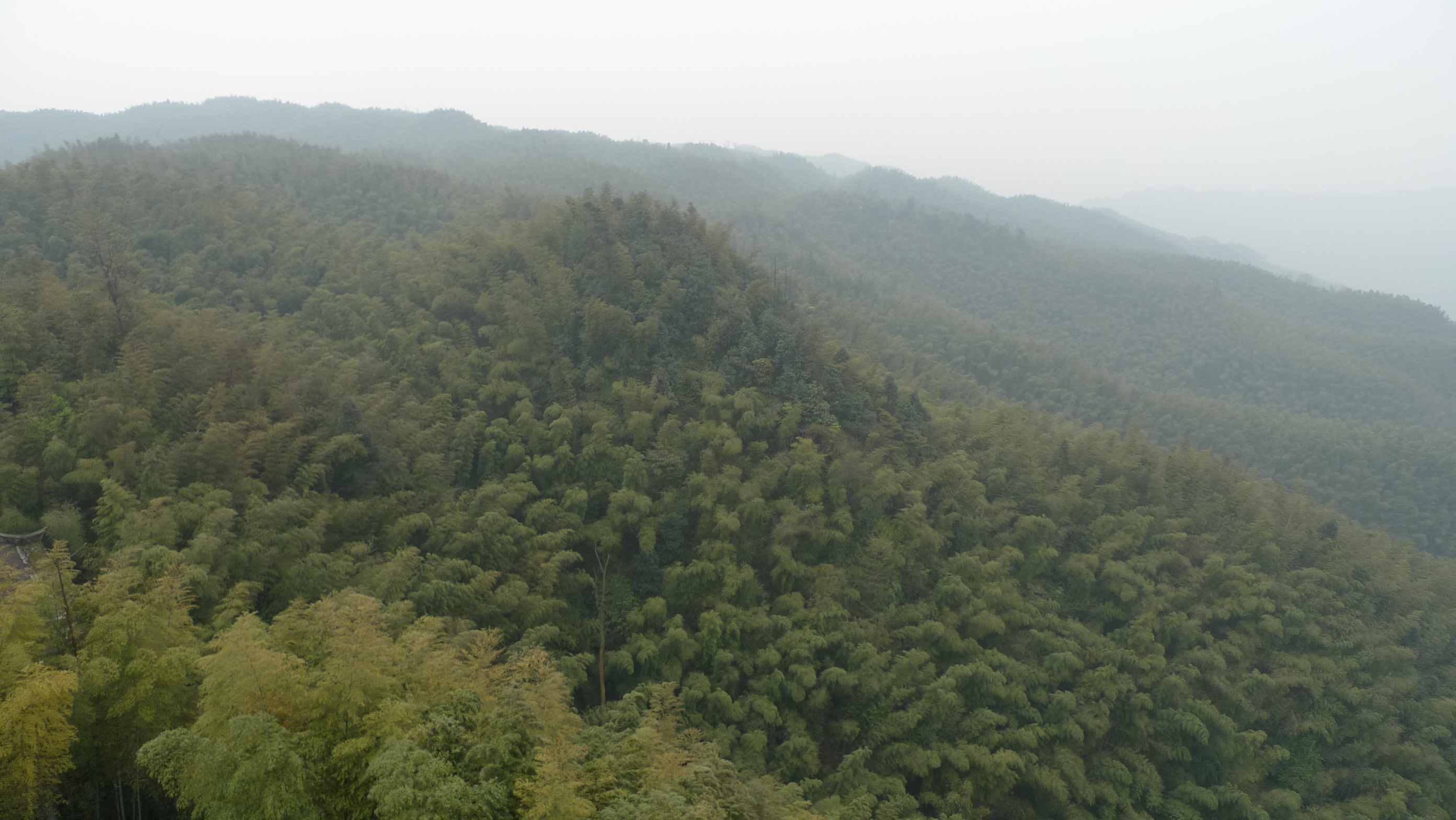Last week I saw for the first time in my life a bamboo shoot appear above ground. I was in Changning County of Sichuan Province in southwestern China, on the edge of the so-called bamboo sea. The bamboo Sea is a large area of bamboo forest, mainly Moso bamboo (Phyllostachys pubescens), stretching as far as the eye can see.
Moso bamboo is a monopodial bamboo, which means that its roots and rhizomes spread out over a large area, reportedly up to 100 metres. The rhizomes create nodes which produce the new shoots. This happens every two years in spring for moso bamboo, while shooting happens for every year for other bamboo, and the month of March is normally the time when the new shoots start to appear. New shoots grow quickly and after a short periods, the growth can reach speeds of one metre per day. After one month or so, the new culm is complete in its height and diameter growth, but it needs a few more years to harden before it can be harvested.
New shoots are bullet shaped, and the outside is furry, possibly to make it easy to push through the soil. There are new shoots every other metre, and apparently there will be as many shoots as there are culms per hectare.
Changning county has made bamboo shoot production its niche market, and many bamboo plantations and natural bamboo groves in the county are managed for bamboo shoots. I enquired whether cutting the new shoots off to process them for food slows down the regeneration of the bamboo forest, but my colleagues explained that the opposite is true. Out of every thousand new shoots, about 500 will naturally die, due to competition for nutrition and space. Half the new shoots can therefore be harvested, giving the other half more chance to survive. Moreover, nodes where the new shoot has been cut off sometimes re-grow a second shoot, and therefore more new shoots will re-appear after a few weeks. Therefore it is acceptable to harvest even more than 50% of the new shoots every year.
The harvested shoots are boiled, and put in large vats with preservative agents, until they are cut up, and packaged for sale. I visited a medium-sized enterprise in town that is making good business from this particular use of bamboo.
INBAR has worked with the owner of this company to try and improve the environmental aspects of the production, and look for ways to reduce preservatives and water use and potential water pollution. This is a challenge for any new business, and lessons learned from this particular company can be transferred to other similar activities.
That is one of the objectives of the INBAR-supported SME Training Centre in Changning, which is being developed with assistance from Citi Foundation and EU funded Switch Asia Programme for sustainable consumption and production. We visited the building that will be transformed in a training facility during the coming months. It is located inside a large nursery, and will be a fantastic centre for learning and knowledge transfer.

Dr Zhu Liang, Vice-Mayor of Changning County and INBAR Director-General Hans Friederich in front of SME Training Centre
More business training, improved technical knowledge and a better understanding of the ecology of bamboo will give a boost to the economic development of the bamboo resources, especially support to an expanding bamboo shoot business. The good thing is that bamboo shoot production does not harm the forest, as this is an industry that is a positive example of green development.




This is very useful information. Indeed bamboo is Wealth and Health. This is what I hope to see in Kenya someday.
Wonderful!Can u help us in Bangladesh to harvest ,store & export Bamboo shoots-they will give an income to the very poor tribal gentleman,up in the remote hills, devoid of a livelihood & the means to it;set up a SME training center to teach about Bamboo!Ww r very short of any timber!
I like your suggestion for a SME training centre. Will discuss with INBAR what we can do.
Best regards
Hans